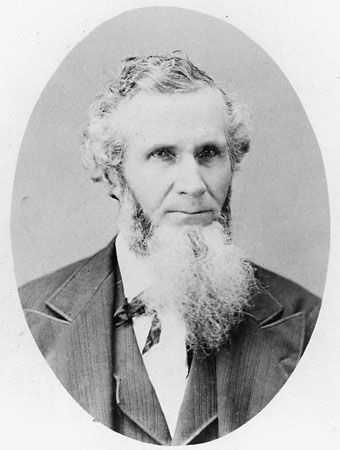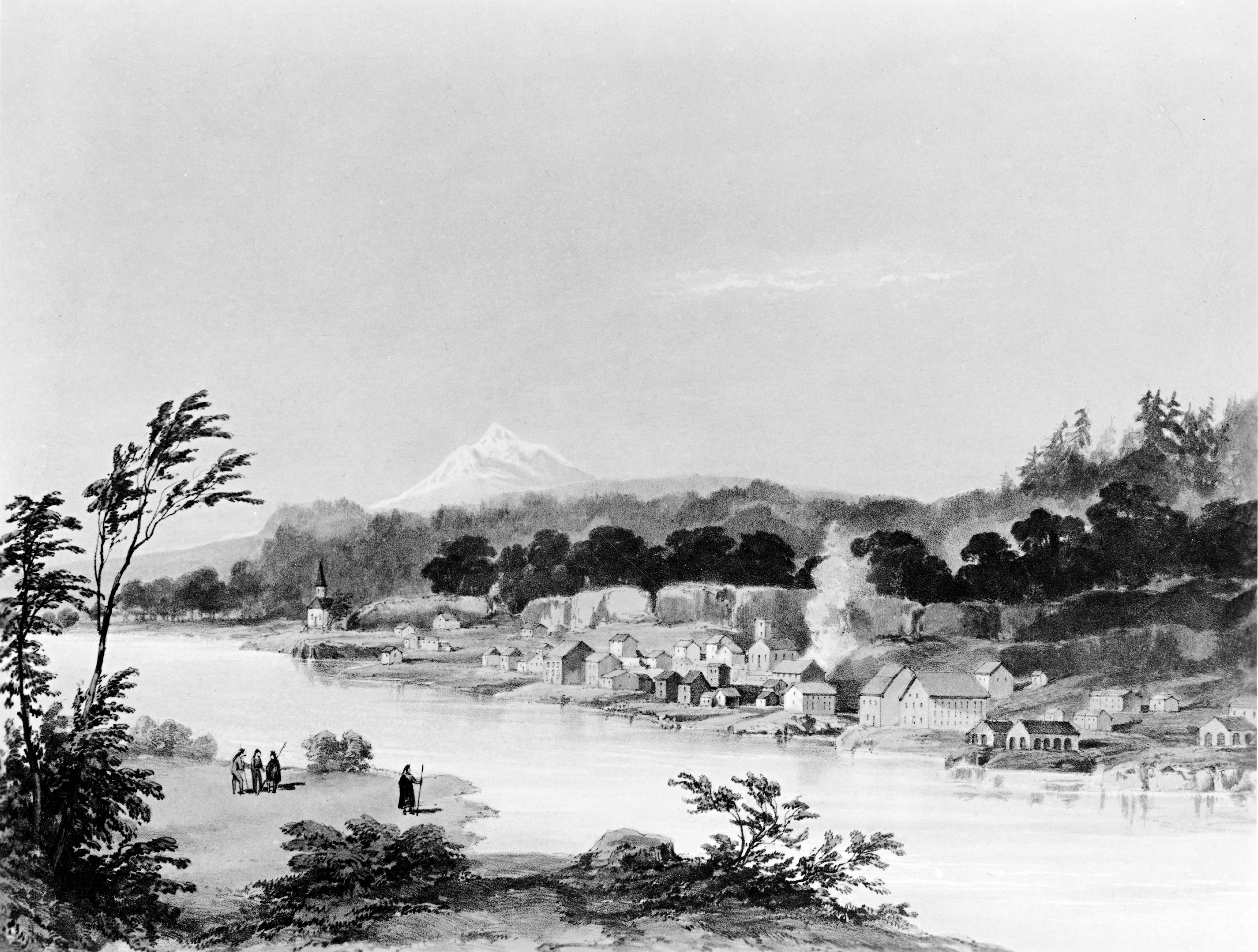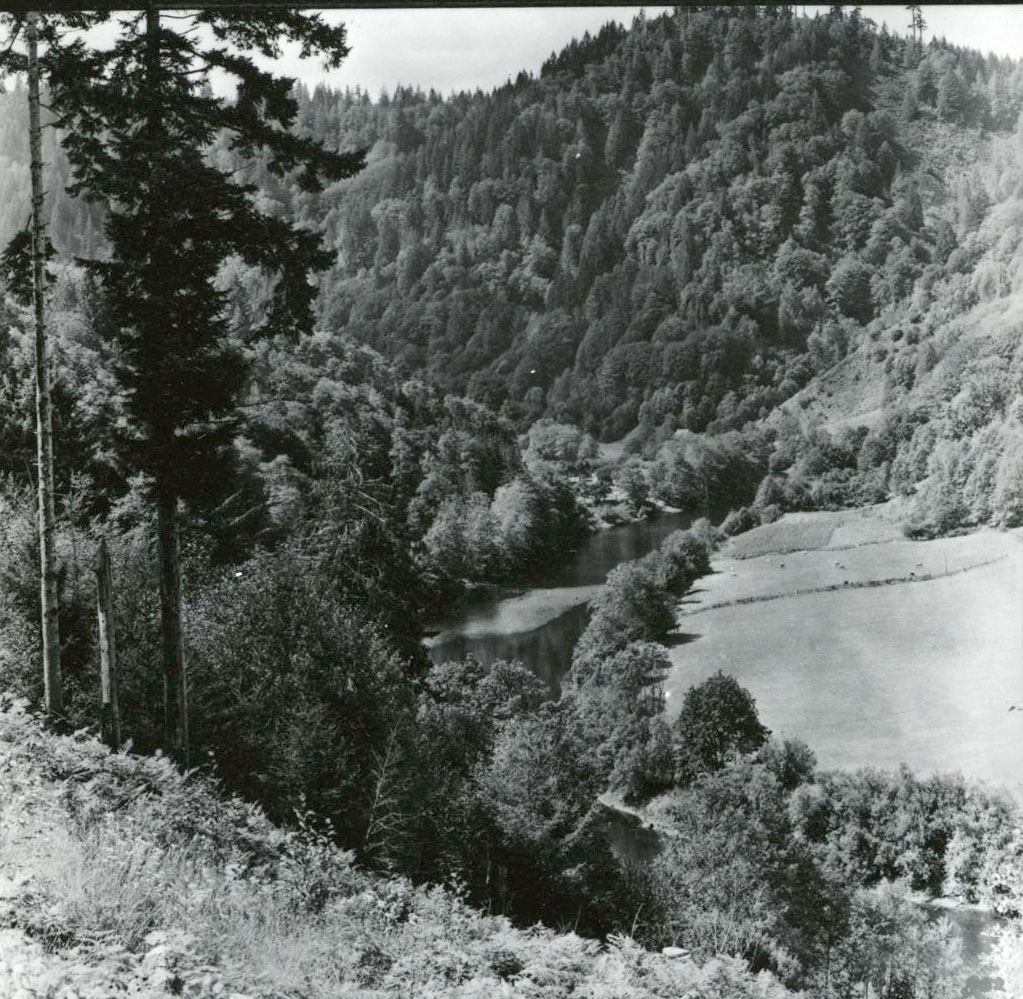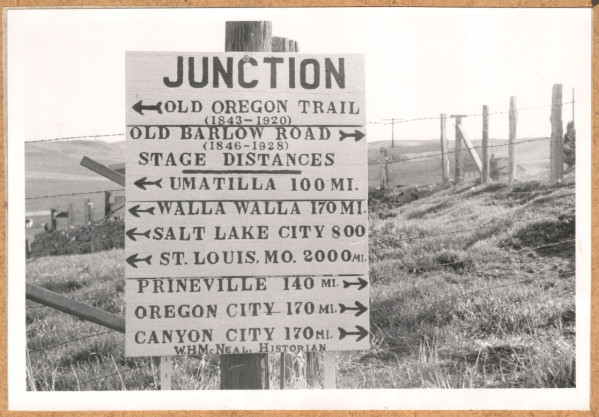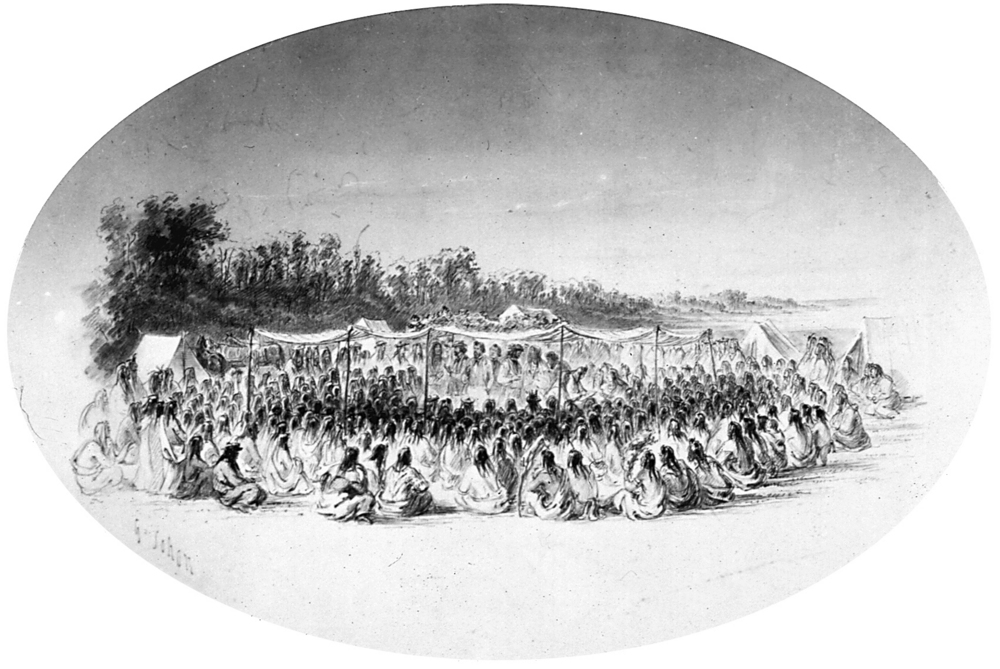Joel Palmer spent just over half of his life in Oregon. He first saw the Oregon Country from a wagon in 1845 and spent three decades participating in central events in Oregon’s political history. During those years, he was a government peace commissioner to the Cayuse, the Territorial Superintendent of Indian Affairs and the Superintendent for Indian Affairs for Oregon Territory, responsible for negotiating several treaties between the United States government and regional tribes. He also founded the town of Dayton in the Yamhill Valley, served in the state House of Representatives and Senate, and ran for governor. At Palmer's death in 1881, the Oregonian quoted Matthew Deady, who said that Palmer had given “the flower of his life for the best interests of Oregon.” The Portland Weekly Standard remembered him “a good and noble citizen.”
Born in Canada in 1810 to American parents—Quakers who had emigrated in 1808—Palmer grew up in the Black River Valley in upstate New York after his family had returned to the United States after the end of the War of 1812. He received only a few months of formal education. At age thirteen, his parents indentured him out to labor for a family in Le Ray, New York, where he lived until age seventeen.
By 1836, Palmer had moved to Bucks County, Pennsylvania, married, lost his first wife to death in childbirth, married Sarah Ann Derbyshire, and moved west to Laurel, Indiana. In Laurel, he worked as a contractor on a major canal-building project. He also served two terms in the Indiana legislature as a Democrat before deciding to travel the Oregon Trail in 1845.
Palmer took the risk of overland travel to Oregon, he later explained, to discover the region and “whether its advantages were sufficient to warrant me in the effort to make it my future home.” He described his experiences in Journal of Travels, a popular travel guide to the Oregon Trail, published in Cincinnati in 1847.
The most remarkable sequence in Journal of Travels is his ascent of Mount Hood. When he reached an elevation of about 7,500 feet, he was able to scout out a wagon route around the mountain that became the Barlow Road. He returned to Indiana in 1846 to gather up his family, including children aged eleven, nine, seven, four, and two years, for travel back to Oregon as captain of a large wagon train. The Palmers settled in the Yamhill Valley in 1849.
Palmer became a political leader during several years of conflict between Indian tribes and aggressive settlers and miners, first as commissary general of volunteer militia in a campaign against Cayuse Indians in 1848, when he gained the sobriquet “General.” He was Oregon Provisional Government peace commissioner to the Cayuse, Territorial Superintendent of Indian Affairs in 1848, and became federal Superintendent for Indian Affairs for Oregon Territory in 1853.
In the course of his duties, Palmer encountered many Native people, including Cayuse, Walla Walla, Umatilla, Yakama, Warm Springs, Tenino, Wasco, Wyam, Rogue (Takelma, Chastacosta, and Shasta), Siletz, Umpqua, Kalapuya, and Chetco. He negotiated nine treaties between 1853 and 1855 and two additional treaties with Isaac Stevens in 1855, but his characterization of whites as the provocateurs in many conflicts with Native people angered some citizens and resulted in his resignation as Superintendent in 1856.
In politics, Palmer came to Oregon a Democrat; but he became an active Unionist at the outbreak of the Civil War, and was a Republican by 1862. Yamhill County voters elected him to the Oregon House of Representatives in 1862, where he served as Speaker, and sent him to the Oregon Senate for four years in 1864. He nearly became the U.S. senator to succeed James Nesmith in 1866 but withdrew his name from consideration because it would have meant leaving his state Senate seat, an action he considered illegal and unethical. Republicans endorsed him as candidate for Oregon governor in 1870, an election he lost to Democrat Lafayette Grover by 631 votes of 22,821 cast.
Palmer tried his hand at the California Gold Rush in 1848, but he put more effort into pioneering an overland trail to British Columbia goldfields in 1858. Four years later, he joined others to secure a state charter for a toll road up the Columbia River. In the same year, he became a corporate director of a woolen mill at Willamette Falls.
Palmer returned to government service briefly in 1871 when he accepted the appointment as Indian Agent at the Siletz Reservation. After less than two years, he became frustrated with the bureaucracy and his inability to aid the Siletz people. He resigned his post and returned to his home in the Yamhill Valley.
Palmer's name is on the Oregon landscape at Palmer Glacier on Mount Hood; Palmer Peak in Multnomah County; Palmer Street in Siletz; Palmer Lake, Palmer Creek Road, and Palmer Creek in Yamhill County; and Palmer House in Dayton, which is on the National Register of Historic Places. In his memory, a World War II Liberty ship, SS Joel Palmer, was launched from the St. John's shipyard in June 1943 for service in the Pacific.
At his death on June 9, 1881, Palmer left eight children, his wife Sarah, who died in 1891, a modest estate, and a reputation as a defender of Indian people.
-
![Joel Palmer.]()
Palmer, Joel, OrHi27903.
Joel Palmer. Oreg. Hist. Soc. Research Libr., OrHi27903
-
![Lithograph of Oregon City, early 1845.]()
Oregon City, 1845, ba014134.
Lithograph of Oregon City, early 1845. Oreg. Hist. Soc. Research Libr., ba014134
Related Entries
-
![Alsea Subagency of Siletz Reservation]()
Alsea Subagency of Siletz Reservation
In September 1856, Joel Palmer, the Superintendent of Indian Affairs fo…
-
![Barlow Road]()
Barlow Road
The Barlow Road is a historic wagon road that created a new route on th…
-
![Oregon Trail]()
Oregon Trail
Introduction In popular culture, the Oregon Trail is perhaps the most …
-
![Walla Walla Treaty Council 1855]()
Walla Walla Treaty Council 1855
The treaty council held at Waiilatpu (Place of the Rye Grass) in the Wa…
Related Historical Records
Map This on the Oregon History WayFinder
The Oregon History Wayfinder is an interactive map that identifies significant places, people, and events in Oregon history.
Further Reading
O’Donnell, Terrence. An Arrow in the Earth: General Joel Palmer and the Indians of Oregon, Portland: Oregon Historical Society, 1990.
Palmer, Joel. Journal of Travels over the Rocky Mountains. Cincinnati: J.A. & U.P James, 1847.
Spaid, Stanley S. “The Later Life and Activities of General Joel Palmer.” Oregon Historical Quarterly 55.4 (December 1954): 327-329.

